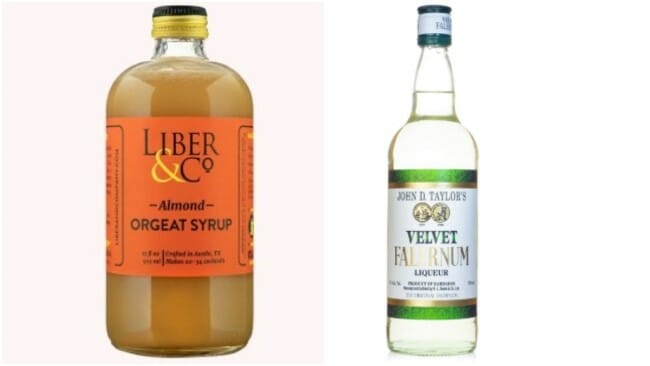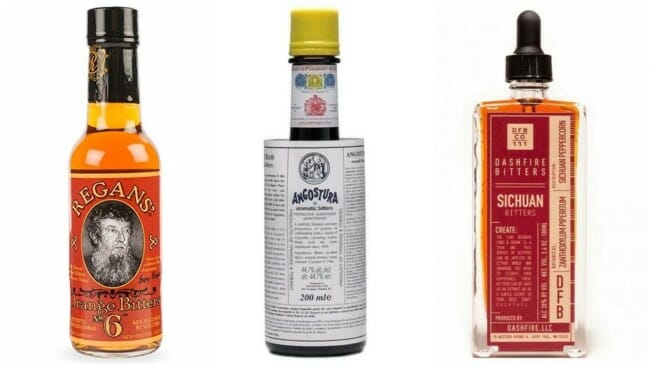The Starter Guide to Home Tiki Cocktails
Photos via Liber & Co., Monin, Dashfire Bitters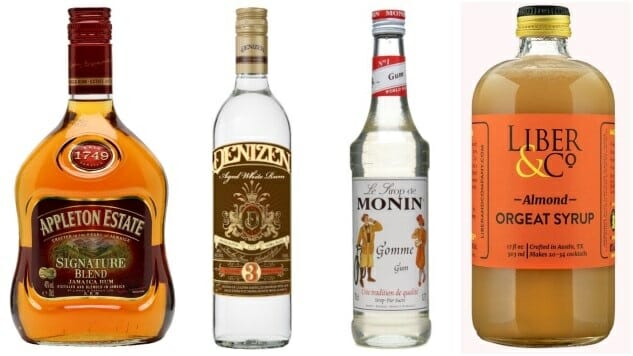
Fact #1 about tiki cocktails: They are delicious. Well-made tiki drinks range from bracing, rum-heavy booze bombs topped with floats of 151-proof spirits, to delicately citrusy quaffers, to spice-driven tinctures that unfold with layer after layer of complexity. They can be consumed as low-volume “up” drinks, in frozen form, or become one with the frigid slush of crushed ice. They’re endlessly adaptable, can be made to include practically any flavor profile, and can even be adapted into outrageously flavorful, booze-free mocktails.
Fact #2 about tiki cocktails: There’s definitely a bit of a barrier to entry. The thing about these drinks is that they often include quite a few ingredients, and few of them (besides perhaps fruit juices) are ones that the average home cook has laying around their kitchen, unless they’ve acquired them for the express purpose of making tiki drinks. As a result, you’re likely to come across recipes for tiki drinks online, think “oh, that looks good” and then realize “wait, I don’t have orgeat and dragonfruit syrup,” etc. It’s the barrier that keeps people ordering tiki drinks in restaurants, rather than making them at home.
With all that said, though, once you put together a basic lineup of core ingredients, the world of tiki cocktails opens up to you in all its splendor. Soon you’ll be whipping together your own mai tais, exotically flavored daiquiris or modern tiki classics, wondering how you ever got along without the ability to expand upon the Prohibition-focused whiskey and gin drinks that are so much more common for the home bartender.
Allow this basic guide, then, to be your checklist when it comes to acquiring everything you’ll need to start making an array of outstanding tiki drinks at home. We’ll walk you all the way from rum to ice, with no stone left unturned.
Quality Rum
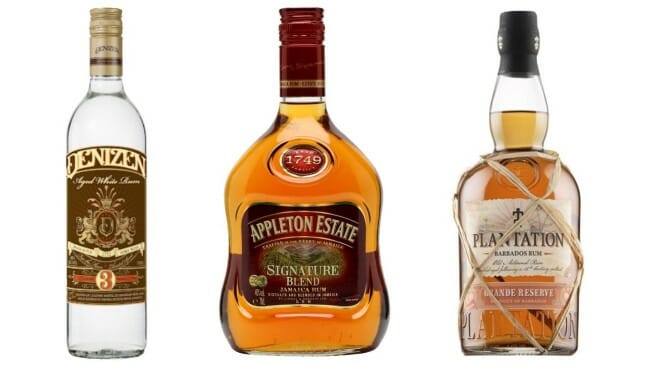
It really seems like it should go without saying, but your tiki drinks are really only going to be as good as the rum you’re putting into them as a base. And you’re going to want a few different basic families of rum in order to make a wide variety of drinks.
Certainly, you’re going to need some good, standard white rum for mixing—we wrote last year about how aged white rum is one of the best categories that most drinkers are totally unaware of, and the extra flavor and smoothness they bring to the category make aged white rums my go-to for basic rum drinks like the classic daiquiri, which is merely rum, simple syrup and lime juice. You should expect to spend $15-25 for a good bottle of something like Denizen Aged White Rum, and they make a BIG difference, compared with the likes of unaged Bacardi.
You’ll then need some quality aged rum, which will be the backbone of many tiki cocktails. Strength doesn’t matter all that much, but get something that at least has some kind of age statement on it if possible. Many “gold rums” have simply been rested in oak for a brief period or are otherwise artificially colored, whereas bottles labeled as “dark rum” are often artificially sweetened and colored—what you want are genuinely aged rums that have seen at least a few years in oak. Value plays include the likes of Appleton Estate Signature, Plantation Grande Reserve, Angostura 5 Year, Mount Gay Eclipse Gold or Bacardi Ocho, and they’ll all treat you just fine in a tiki drink.
Those two are the basics, but the next level would be to get some stronger overproof rums such as Wray & Nephew or Lemon Hart, or some funkier, earthier, grassier rhum agricoles such as Rhum JM or Rhum Clement to explore new flavor profiles. For starters, though, you can stick to simply good white and aged rums.
Simple Syrup/Gum Syrup
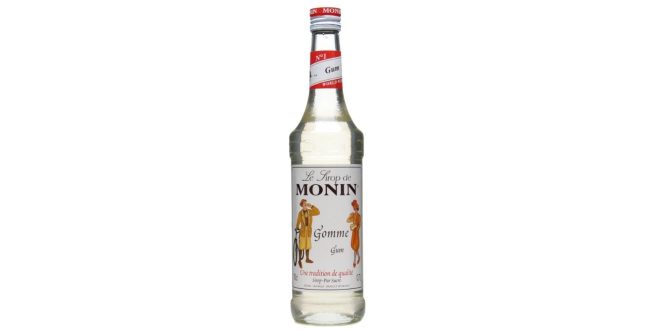
Tiki drinks have a reputation for being on the sticky-sweet side, and although this is a misconception that by no means is true of all of the entire category, some degree of sweetness is present in the vast majority of recipes. As such, you’re going to need a ready supply of ways to add that sweetness, and simple syrup mixes far better than trying to add sugar by other means.
Classic simple syrup is simply a mixture of water and sugar, at a 1/1 ratio. That works just fine in most recipes, but most bartenders you meet will instead prefer what is known as rich syrup, which is just simple syrup made with a 2/1 ratio of sugar to water. That results in a thicker syrup, which means you can use less of it by volume in a drink, resulting in a less watered-down texture. Simple syrup is of course very easy to make at home (simply heat water with sugar in it till simmering, then cool and bottle), and having a bottle of ready-made rich syrup in the fridge is a great way to be prepared to make tiki drinks.
You can take things a step further, though, by upgrading to gum/gomme syrup, which is rich syrup with the addition of gum arabic, a natural emulsifier made from the resin of the Acacia tree. A staple of tiki traditions, gum syrup works just like regular simple in terms of adding sweetness to drinks, but the gum arabic also helps to contribute a subtly fuller and more silky mouthfeel. It’s one of those little upgrades that can make a big difference in simple cocktails such as the daiquiri, giving them the desirably full mouthfeel you’re likely to get if you order one at the bar. Gum syrup is widely available from retailers, and bottles last quite a while, so I think this is a no-brainer to pick up.
-

-

-

-

-

-

-

-

-

-

-

-

-

-

-

-

-

-

-

-

-

-

-

-

-

-

-

-

-

-

-

-

-

-

-

-

-

-

-

-

